People
Art We Love: Musician and Actress Kate Nash on Tracey Emin’s Fearless Art
On the British artist's raw depictions of the 'mess of being a woman.'
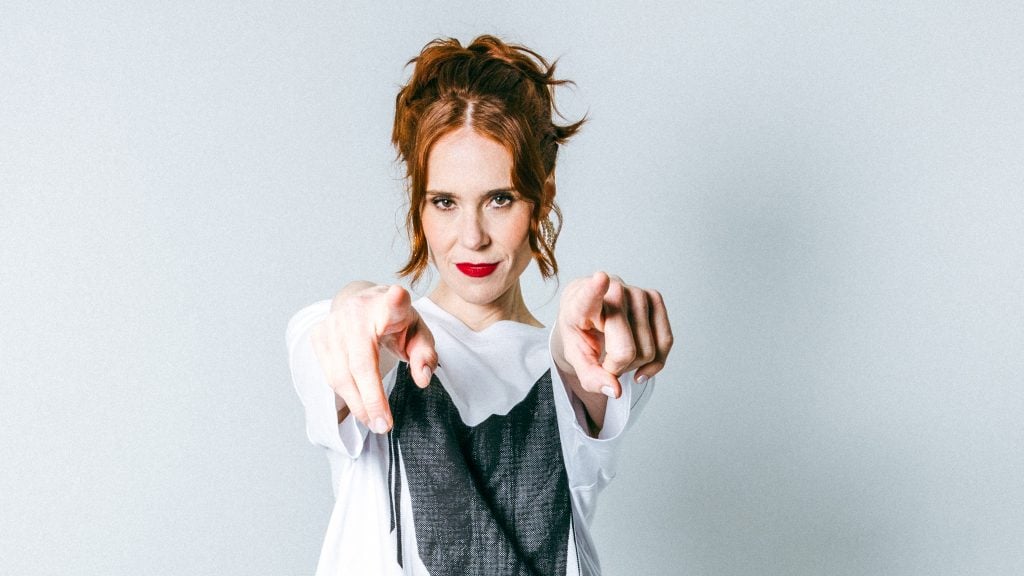
The cover of Kate Nash’s new album is striking: on it, the British musician and actor is pictured standing in front of a scenic backdrop in an image that at once conveys and subverts illusion. It’s a duality that she unpacks in the contents of the record, 9 Sad Symphonies, which shrewdly navigates despair with winsome, candid indie-pop, a Nash signature. And it is also woven through our conversation, taking place on the eve of her first North American tour in six years, about the art that has shaped and moved her as an artist and feminist.
From a young age, my mom and dad would always take us on the Tube up to London and we would go to museums. We went on holiday to France, and we’ve seen places where artists like Van Gogh lived. It was really important for my parents to share culture. They grew up working class and and so did we. I really appreciate that they made such an effort to take us places.
I remember going to see a Tracey Emin exhibition [of her appliqué blankets] when I was a teenager. I just loved a lot of the writing and sewing and words in her work. I really was drawn to the mess of being a woman, because we’re so often being presented with the falseness of perfection. I just don’t think there are moments when people can be put together. This false presentation that we are in because of social media just makes me gravitate towards anything that is a little bit freaky and a little bit messy.
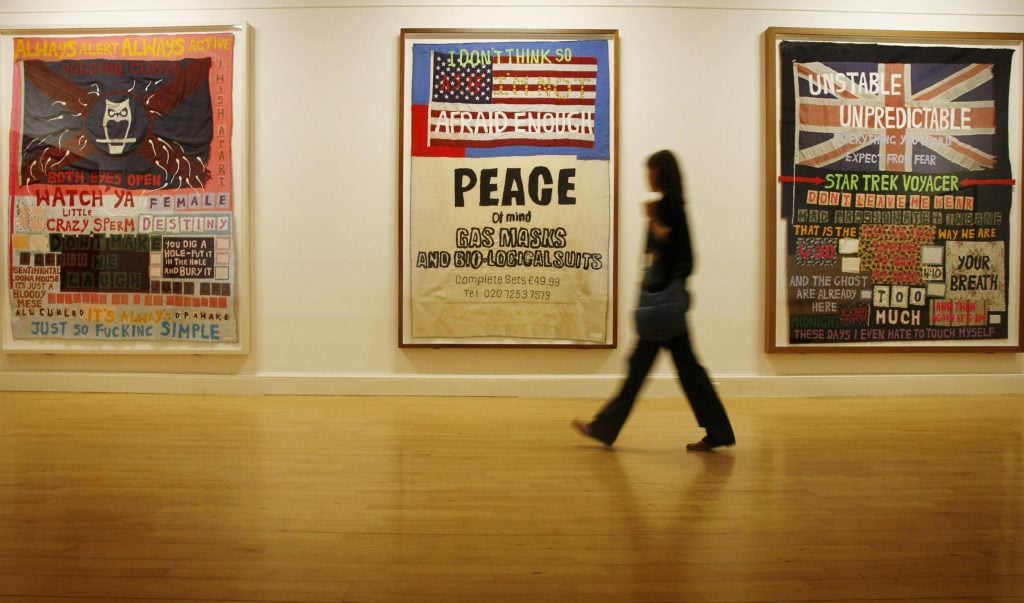
Tracey Emin’s Volcano Closed (2001), Something I’ve always been afraid of (2002), and Star Trak Voyager (2007) on view at the Scottish National Gallery of Modern Art in Edinburgh, 2008. Photo: Ed Jones / AFP via Getty Images.
My entryway to Tracey Emin was music, because of Billy Childish and Thee Headcoats. Seeing her work was my first feeling where I was like, “Oh, I feel like I am really interested in the mess.” Her work just had messages that question what women are told. It felt accessible, like you could go home and make your own version of it.
I like work that is quite weird, maybe explicit. In my kitchen, the first art that you see when you come into the house are these photographs of naked, oiled up butts, which I bought at a queer art sale to raise money for homeless trans people. I want to have art on the wall that is going to be provocative in some way or start a conversation. I’m interested in the people who made that, and I like the exploration of the human body. In today’s world, everybody’s photoshopped and tuned and perfect, but I just don’t find that so interesting. The grit and the dirt, what’s underneath—that’s what I want to know.
I follow Tracey Emin on Instagram, and I know she’s shared a lot about her illness. I do really like her new paintings, too. There’s a lot about sharing online that I really don’t love, but the way that she shares is the way an artist should share on social media. She’s sharing her life in a way that feels very honest. She’s just talking about what she’s going through because that is the life of an artist, isn’t it? It’s to share your experience and to explore what’s happening to you.
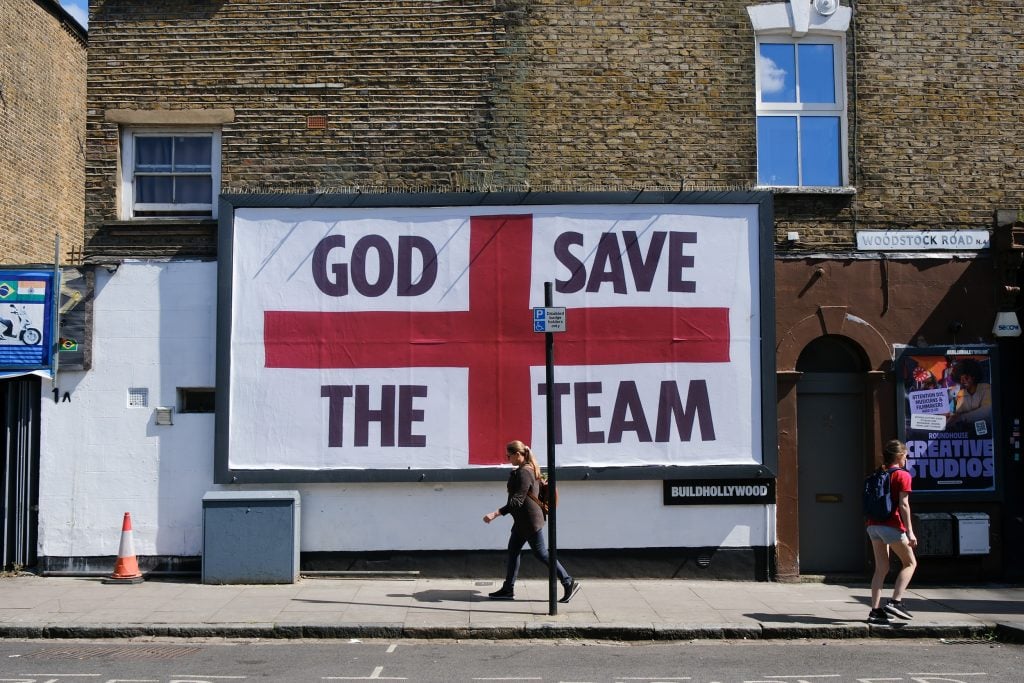
Corbin Shaw’s God Save The Team billboard in the U.K., 2024. Photo: Matthew Chattle / Future Publishing via Getty Images.
In the last few years, I’ve become a massive fan of Corbin Shaw, an artist from Sheffield in the U.K., and his work is all about masculinity and the identity that comes from growing up in a former mining town. I bought one of his pieces, this big St. George flag that says, “Soften Up Hard Lad.” It’s just really striking. His flags feel so British, and they feel like a young man exploring masculinity and being working class and Northern. I also like the intimacy of Corbin’s work. I care a lot about misogyny being on the rise and young men reacting against the patriarchy too, because that’s what feminism needs.
But then there’s the other side of me that is quite like an old lady. I really like kitschy objects. I have this massive strawberry that my friend Kelsey Hart, an artist and graphic designer who goes under the name the Little Ghost, made while attending art college in Orange County. It’s this perverse strawberry that looks like a saggy pair of boobs or balls. It’s a weird strawberry, a little bit rude. I guess I like rude art!
I like objects that are meaningful. We have a hand-painted little ceramic vase that once belonged to my boyfriend’s mom; she died when he was a teenager. I put it in this cupboard that we call the museum, which has all of our special, delicate, fragile things. I have a collectible Buffy doll, which I consider to be art. I have a vintage candle that’s shaped like a pony. I also have one of my friend’s wisdom teeth, which I keep in a mold of my other friend’s teeth. I really like the human body.
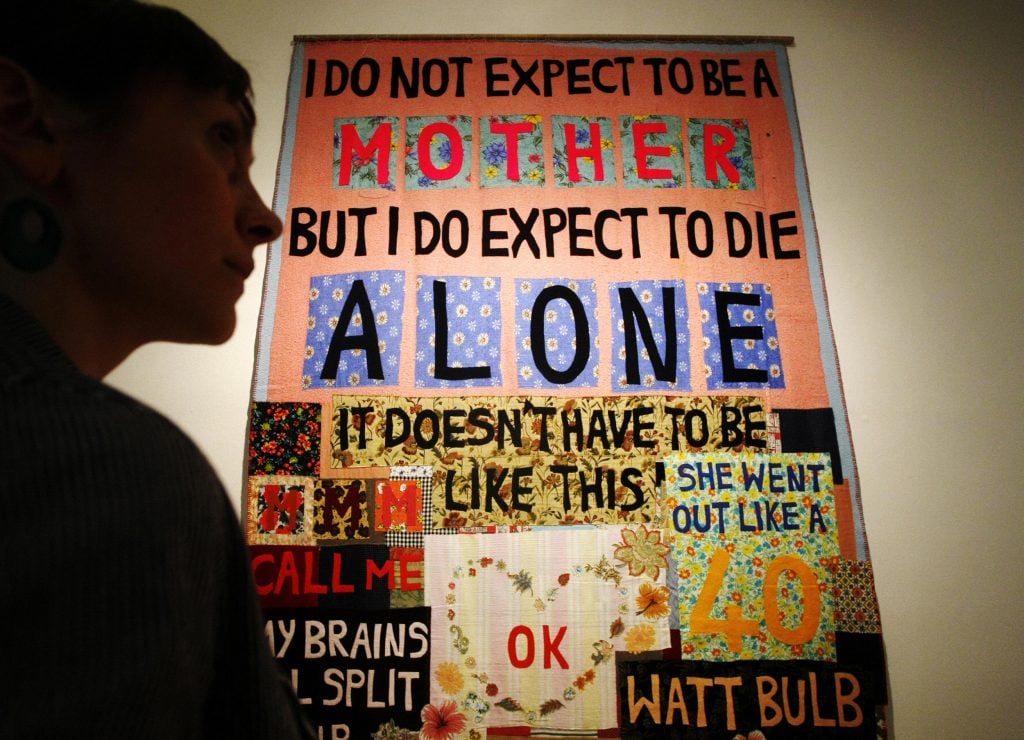
Tracy Emin, I Do Not Expect (2002) on view at the Scottish National Gallery of Modern Art in Edinburgh, 2008. Photo: Ed Jones / AFP via Getty Images.
My new album, 9 Sad Symphonies, was inspired by the backdrops in musical theater. In the movie The Sound of Music, you see these beautiful scenes of nature, but they were just painted backdrops of nature. I just love that kind of magic; I love when you don’t notice it and then when it is really noticeable. It really inspired my new record, of playing with nature and art and beauty.
The album is really about depression, and nature was really integral in supporting me through that experience. I’m often trying to find my purpose through music, but you never question it in nature. You see the ocean—the tide comes in, the tide goes out, the tide comes in, the tide goes out—those things are so comforting and powerful, and you never question them. So, nature became this amazing guide for me through that.
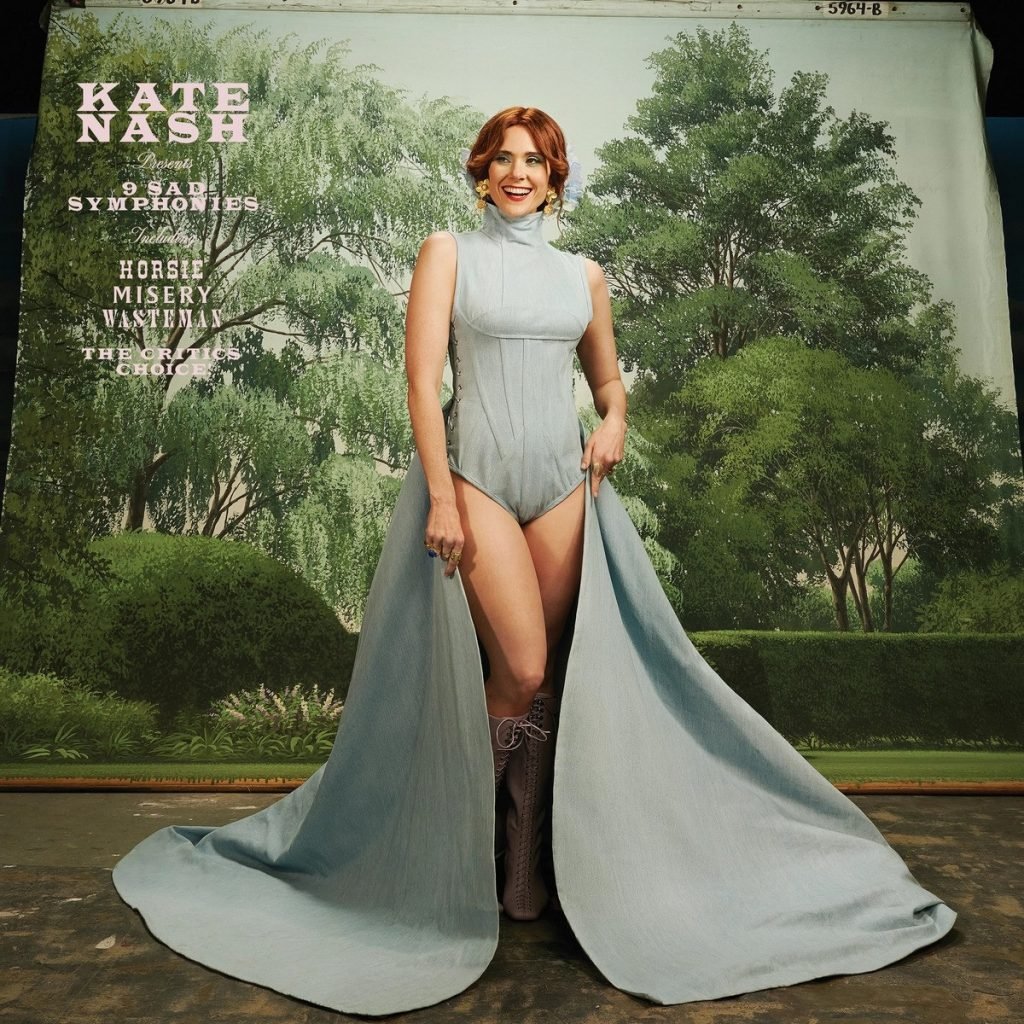
Kate Nash, 9 Sad Symphonies (2024). Courtesy of Kill Rock Stars.
I wanted to use nature in the album’s artwork and even in my live shows, but also take it to a theatrical place. I’m an artist; I love breaking down walls. Music and art can be a really fun collaboration. For a songwriter, you’re building a visual world, but through lyrics, and when an artist has a really strong narrative already, there’s so much to draw from. It’s a fun way to write songs.
—Kate Nash, as told to Min Chen
Art is more than a thing to hang on your wall. More often, it’s a font for happiness and joy. In “Art We Love,” we ask charismatic individuals from the art world and beyond to tell us about a work of art that they love, one that uplifts or inspires them.





